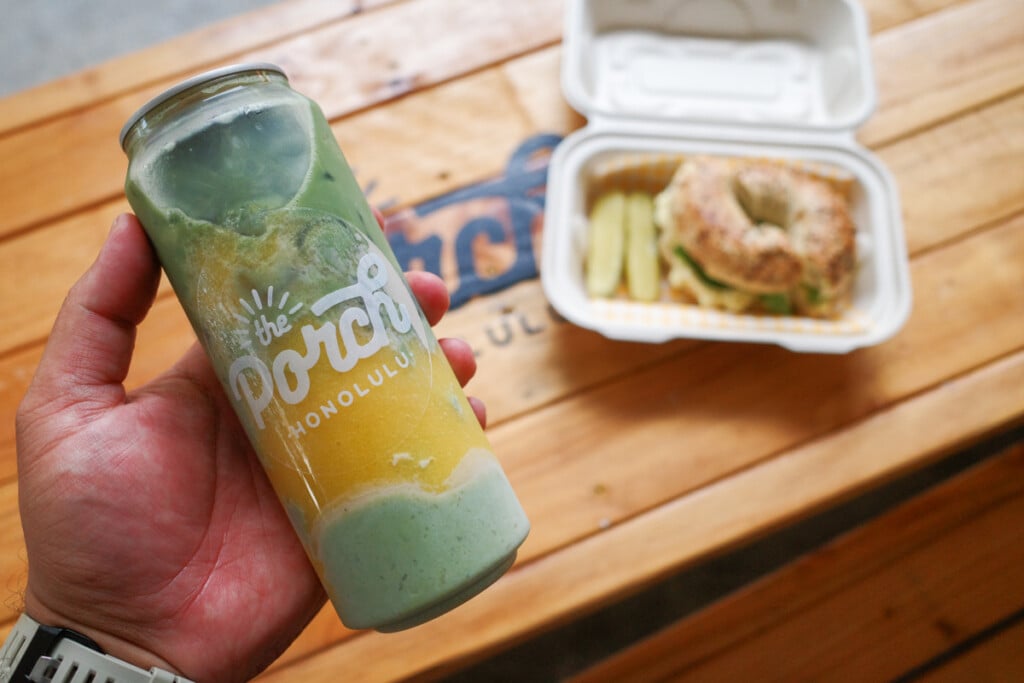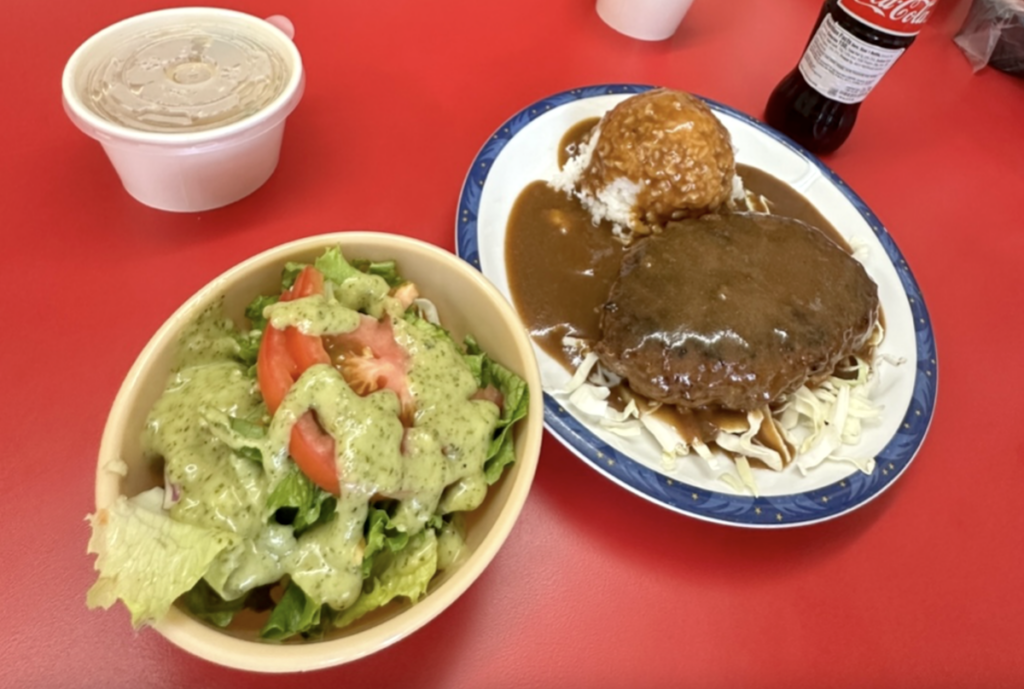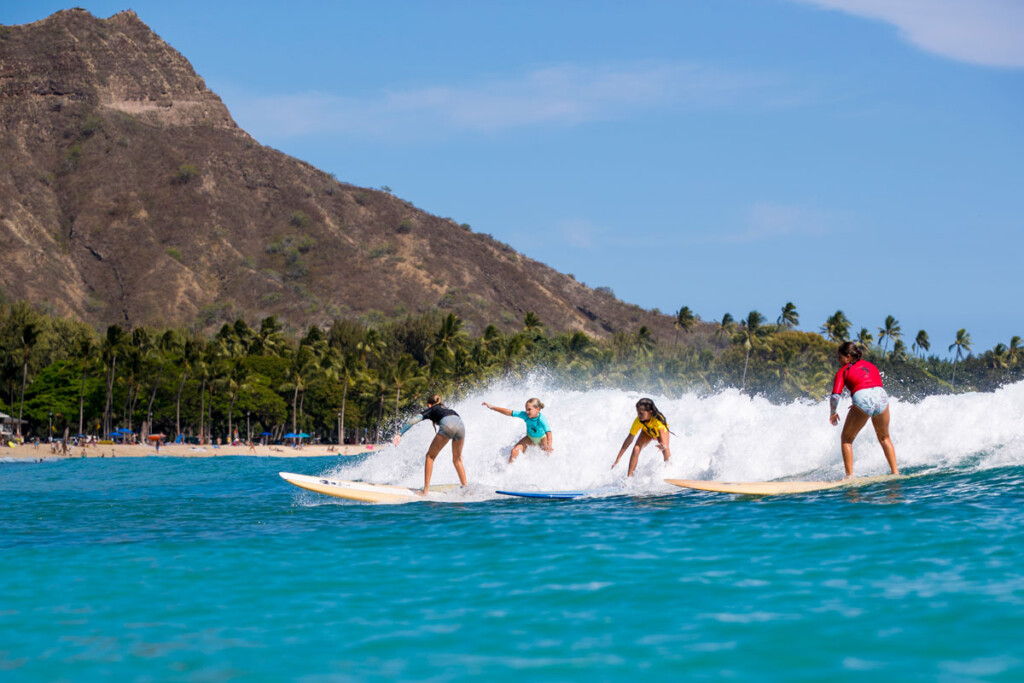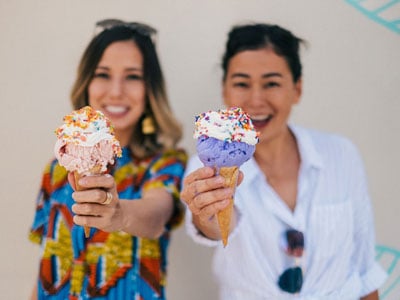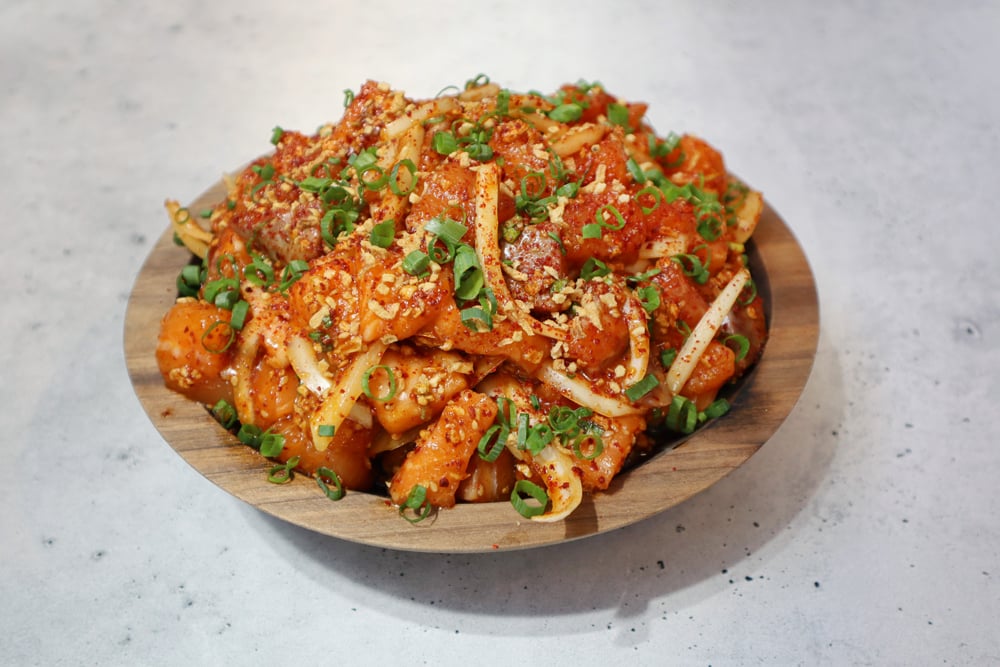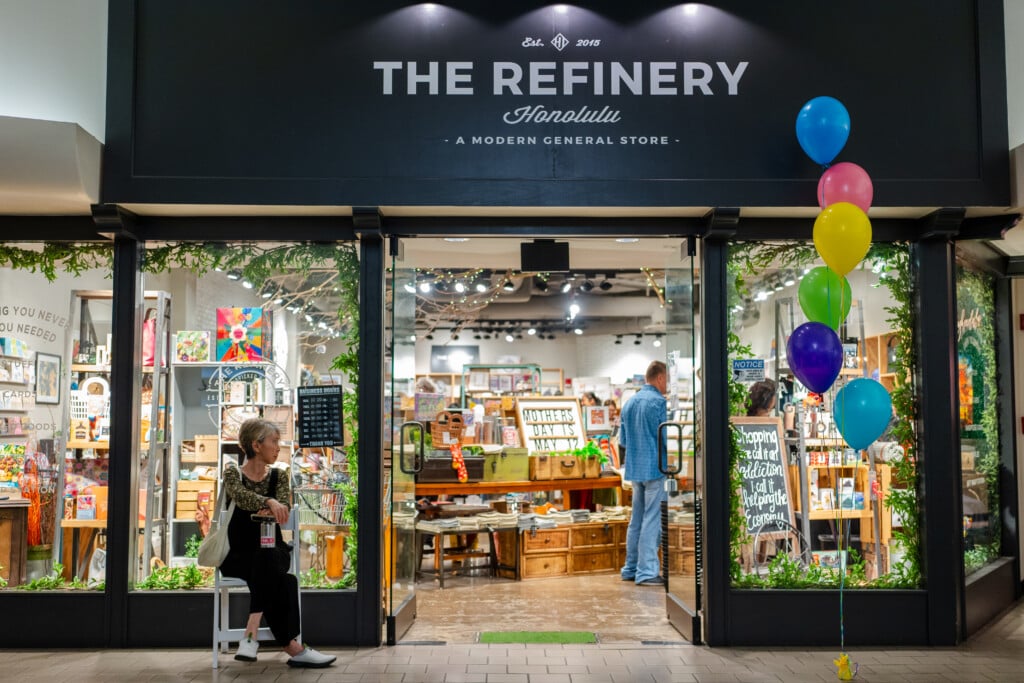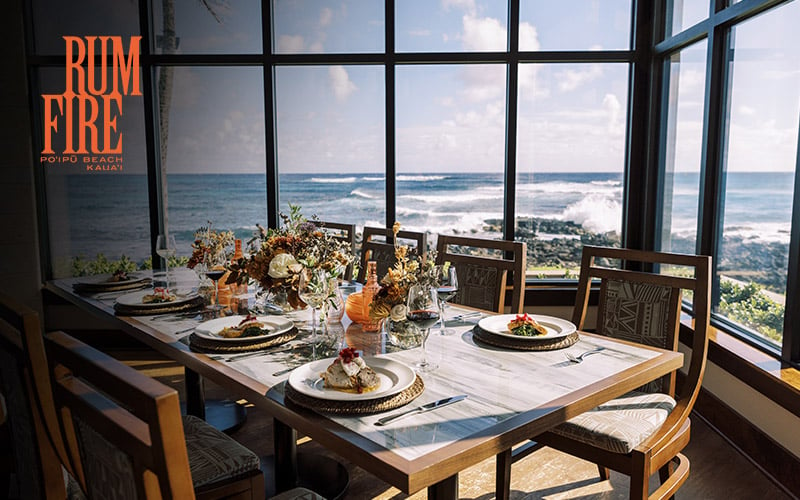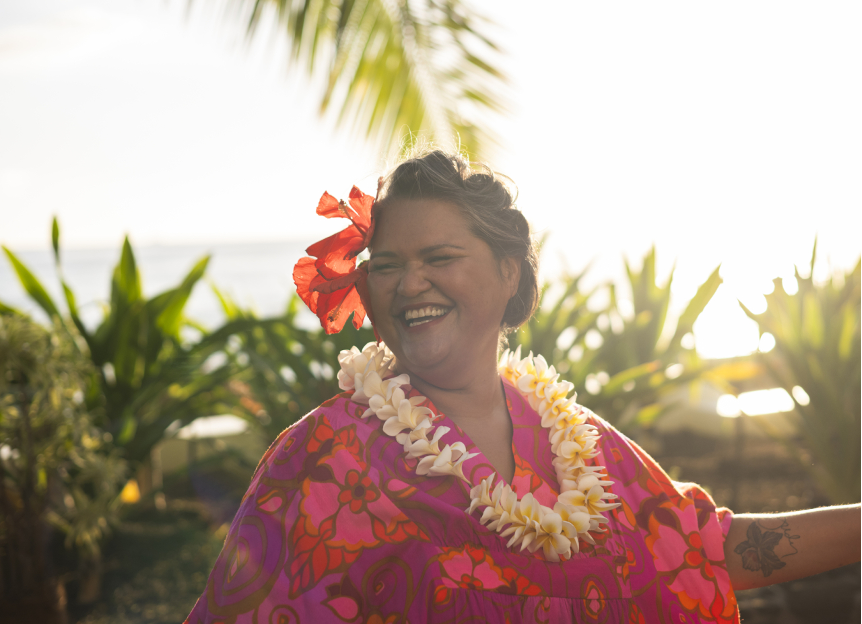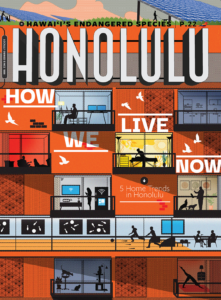The 50 Greatest Hawai‘i Albums of All Time
Albums 1-25

Hawai‘i is the only state with its own distinct music. Since the advent of the LP, we‘ve enjoyed that music mainly through recordings-everything from the crooners of the 1940s to the innovators of the ’70s to today's broad range of contemporary and traditional artists. Here, an esteemed panel of musicologists, producers and artists select the 50 albums they feel represent the best in Hawai‘i music.
No.1
Honolulu City Lights
Keola and Kapono Beamer, 1978

Few albums have become so completely integrated into the consciousness of local culture as Keola and Kapono Beamer’s Honolulu City Lights. In the 26 years since its release, its songs have become the soundtrack to Hawai‘i.
By now, every man, woman and child in Honolulu has surely given the shaka for the Channel 2 news camera at least twice, to the strains of “Kaliponi Slack Key.” The album's last track, “Only Good Times,“ has become a staple of local high school graduations (movie trivia: the song also appears in the surf flick Big Wednesday).
And then, of course, there's the title track. Tom Moffatt likes to tell the story about the first time he heard the song “Honolulu City Lights.” He had just signed the Beamer Brothers as the first act on his new record label, and Keola called him up one day to say he should come up to ‘Alewa Heights to listen to a new song. “It was late in the afternoon, just as the sun was going down,” Moffatt says. “The lights were starting to come on, and Keola started to play “Honolulu City Lights” for me. That was the first time I heard it, just the raw version, and I knew we had a winner right there. I just flipped. It was one of those moments you never forget, hearing that song and looking out over the city-holy cow.”
When the album was released, the rest of Hawai‘i said, holy cow, as well. “It was just overwhelming when it came out,” radio personality Harry B. Soria Jr. says. “It was so full and so lush and so perfect.” Much of that lushness was due to producer Teddy Randazzo, who wrote and conducted the string arrangements throughout the album. Kapono Beamer says, “Teddy was the best thing that could ever have happened to us. He could see the core of what we were-two guitarists and two vocalists-and he never lost sight of that. Everything he did just embellished the core of the songs.”
The polished production impressed, but it was that core-the Beamers’ songwriting-that has endeared “Honolulu City Lights” to Hawai‘i residents and visitors alike to this day. The universal quality of the lyrics and the music make it a timeless classic.
Keola Beamer says he’s gratified by the enduring response to “Honolulu City Lights.” “I was writing about my experience, not the common experience of a human being getting on a plane for parts unknown and watching the jewels of the Islands disappear,“ he says. “I was just writing the story that was in my heart. Turns out, it lived in many hearts.”
No.2
Guava Jam
The Sunday Manoa, 1969
 |
The Sunday Manoa didn’t intend to start a revolution. But when the group released Guava Jam in 1969, it did. In a decade in which rock ‘n’ roll consumed the Islands’ radio stations and nightclub scene, Guava Jam breathed new life into Hawaiian music. It was the album that launched the Hawaiian Renaissance of the 1970s-a cultural reawakening driven by such music innovators as Gabby Pahinui and the Sons of Hawai‘i.
“It was really the events of the time that made this album,” says Peter Moon, founder of The Sunday Manoa. “We were surprised at how the album was received, because we didn't set out to change anything.”
Timing wasn't the only reason Guava Jam became a turning point for Hawaiian music. The Sunday Mänoa’s members were phenomenal. A force on the ‘ukulele and slack key guitar, Moon blazed his way through songs like “Kawika” and the album’s title track. Robert and Roland Cazimero’s soaring voices and musical dexterity are also imprinted on each song.
 |
| From left to right, Robert Cazimero, Peter Moon and Roland Cazimero From The Sunday Manoa 3 album |
“They stole our hearts,’ says veteran radio personality Honolulu Skylark. “Now it was cool to listen to Hawaiian music, it wasn't just for our parents.”
In a sense, Guava Jam became the first truly contemporary Hawaiian album. “They took the traditional Hawaiian songs to a new place,” says albums’ panelist Kapono Beamer. “It held truth to traditional lyrics, but they added musical innovation and a unique energy.”
Today, 35 years after Guava Jam's release, Robert Cazimero is still floored by the album’s longstanding impact. “I was only 19 and Roland was 18 when we recorded the album, so no one could have been more surprised,” Cazimero says. “People still ask me what it was like being at the forefront of the Hawaiian Renaissance, but we didn’t realize it. We were just having a good time playing music.”
No.3
Gabby
Gabby Pahinui, 1972
 |
To grasp the legendary status of Gabby Pahinui, consider this: Martin Pahinui says Japanese tourists sometimes venture out to his Waimänalo home to take pictures and ask him about his father, even though he died more than 20 years ago. “I never realized how big my father was until after he passed away,“ says Martin. “He's not just big here, but all over the world.“
Since the creation of the LP, no Hawaiian artist has made more of an impact. Pahinui was a self-taught musician, mastering the slack key and steel guitars without taking a single lesson and controlling his distinctive, rough baritone voice with ease. Today, many of Hawai'i's greatest musicians-Peter Moon, Kapono Beamer, Jake Shimabukuro-acknowledge Pahinui's influence.
“Gabby was at the forefront of everything that was pointing to the renaissance of Hawaiian music,“ says Beamer. “I realized I didn't need mainstream pop music like Santana, because we had Gabby right here at home in Hawai'i. He set off a light in my creative spirit and inspired me to play Hawaiian music.“
Gabby, often referred to as “The Brown Album,“ signals the start of Pahinui's music-making with sons Martin, Bla, Philip and Cyril. The acoustic recording sounds as casual and lively as the backyard jam sessions for which the Pahinui home was known.
 |
| (From left) Bla and Gabby Pahinui, Atta Isaacs, Philip, Cyril and Martin Pahinui and Manuel “Joe Gang” Kupahu. From the Gabby album |
“'Gabby Pops,' that's what we called him, never thought of himself as an icon,“ says longtime family friend Honolulu Skylark. “He'd say, 'I play how I sing, and I sing how I play.' Music was so natural for him, while others had to work hard at this craft.“
Gabby introduces two versions of Pahinui's signature piece, “Hi'ilawe.“ One version, Pahinui's first professional recording, was done in 1947, when he was 26 years old. The second rendition, the album's final track, was recorded in 1972, on his 51st birthday-historic proof that Pahinui was always a star.
No. 4
The Extraordinary Ku'i Lee,
Ku'i Lee, 1966
 |
Ku'i Lee was known as the genius songwriter who helped catapult Don Ho to fame with hits such as “I'll Remember You.“ Released just months before Lee's death, this album showcases his remarkable breadth as a composer who mixed rock, jazz and R&B to create distinctly cosmopolitan songs, such as “Ain't No Big Thing“ and “Rain, Rain Go Away.“ On this album, Lee also proved that he was a sharp song stylist, capable of rockin' with the best of 'em.
No. 5
Kawaipunahele,
Keali'i Reichel, 1994
 |
Reichel says this debut album was done on a dare from friends, who heard his singing around the house and thought it deserved recording. “Finally, a friend of mine, Fred Krauss, bugged me so much that I said, OK, you guys get the money together, and I'll do it,“ he says. His friends called his bluff, his hula ha-lau sold shortbread cookies and taro bread to finance part of the album, and Reichel has been a star ever since.
No. 6
Exotica,
Martin Denny, 1957
 |
To many, Martin Denny is exotica. He developed his instrumental, loungy style, accented with bird calls, while playing at the Hawaiian Village Shell Bar, and became a national ambassador of the Waikïkï cocktail sound after the stereo version of Exotica was released by Liberty Records, and “Quiet Village“ became a Billboard Top 10 hit. The macaw screeches and bongos may have been geographically inappropriate, but they somehow fit the times perfectly.
No. 7
Young Hawai‘iPlays Old Hawai'i,
Hui 'O hana, 1973
 |
Hui 'Ohana were literally a family group-twin brothers Ledward and Nedward Ka'apana and their cousin Dennis Pavao, all from Kalapana. They were hugely prolific during their short career, but this album stands out as an embodiment of the Hawaiian Renaissance of the early '70s. As the title suggests, it was a canny update of old standards, with Led slipping in Ventures surf licks with the traditional slack key, and Pavao's falsetto soaring over everything.
No. 8
Ho'ala,
The Brothers Cazimero, 1978
 |
Although Robert and Roland Cazimero have recorded more than 30 albums, Ho'a-la remains one of their standouts. Mesmerizing vocals and full-bodied instrumentation-a product of Robert's skill on bass and Roland's mastery of the 12-string guitar-make each song, from “Nani Hanalei“ to “Pua Mae'ole,“ a simple masterpiece. “We recorded the album in one week at a beach house in Ha-'ena on Kaua'i,“ says Robert. “Every emotion you can think of ran through us that week. The magic is on that album.“
No.9
Facing Future
Israel Kamakawiwo'ole, 1993
 |
Israel Kamakawiwo'ole was the unlikeliest of superstars. Not because of his obesity, although it certainly broke the norm for entertainers in this image-conscience age. But for most of his career, Israel was a member of an ensemble, just one of the Mäkaha Sons of Ni'ihau. In fact, in the early days of the group, it was his older brother Skippy who was the favorite to make it big, until he died in 1982.
Facing Future changed everything, and put him squarely into a spotlight that only intensified after his untimely death in 1997. It was Israel stretching his wings, on his own for the first time. The public clearly appreciated this transformation, and many also took songs such as “Maui Hawaiian Suppa Man“ and “Hawai‘i'78“ as anthems of a larger political struggle. In whatever context it was viewed, it was an undisputed triumph, the first Hawai‘ialbum to be certified gold.
Producer Jon de Mello was there to capture the process. He says that he recognized the historic nature of the occasion, and assigned a studio technician solely to record Israel every moment he was in the studio. “As soon as Israel's car was turned off in the parking lot, I would say, push that button red,“ says de Mello. “I want to hear the door opening, I want to hear this man walking across the room and sitting down in the chair.“
The obsessive procedures paid off-Israel's moving spoken segments on “Hawai‘i'78 Introduction“ were collected from these “off-time“ studio recordings. When he declares, “I feel free now,“ it's not a scripted sentiment.
The album is full of simple moments like this; Israel was at his best when stripped to his essentials-just his delicate voice and his 'ukulele floating alone, making it impossible to believe he could be anything other than a star.
No. 10
Kalapana,
Kalapana, 1975
 |
Kalapana's self-titled debut perfectly reflected Island life in the 1970s. The pure, soulful voices of Malani Bilyeu and Mackey Feary-combined with the versatility of musicians D.J. Pratt and Kirk Thompson-captured the angst, intensity and playfulness of young men coming of age in the Islands. “What's remarkable is this music still sounds good today,“ says longtime record producer Tom Moffatt. “If you heard 'Naturally' or 'Nightbird' today for the first time, you would still go wow.“
No.11
Party Hulas
Genoa Keawe, 1963
 |
Auntie Genoa Keawe is one of Hawai'i's most revered artists, and Party Hulas is generally regarded as her finest work, including her signature tune, “Alika.“ The album features an all-star backing lineup, with legends-in-their-own-right Vickie I'i Rodrigues, Pauline Kakahuna, Violet Pahu Liliko'i and Benny Rogers, a crew Keawe affectionately calls “the old-timers.“
Party Hulas was primarily intended as a resource for hula instructors, to give the correct lyrics and meaning for the most popular “war horses“ of the hula canon, but people quickly found the album a surefire shortcut to a great pa'ina (party). Radio personality Honolulu Skylark says, “If you were having a party or a lü'au, all you had to do was throw on that record. It made the party.“
That Party Hulas made a perfect party soundtrack wasn't a complete surprise to Keawe, who says she was always mindful of the potential audience. “I try to keep it as popular as I can with my singing. You pick up the tempo and then you slow it down, and then pick up the tempo and slow it down. You don't do all fast, you change the tempo for variety.“
For those actually interested in the album's instructional aspect, Jean Sullivan provides exemplary liner notes, with technical instructions for hula dancers, Hawaiian song lyrics, English translations and explanations of the kaona (hidden meaning) of the songs. It's good to know, for example, that the poetic-sounding line, “A he pua 'oe ua 'ako 'ia“ in “Papa-lina Lahilahi“ actually means “You're a flower already plucked.“
Keawe is still performing today, at the age of 85, and has no plans to quit anytime soon, saying, “Everybody says, 'Gee, Auntie Genoa, looks like Hawaiian music is leaving us. People are not singing it too much.' I say well, as long as I'm alive, there will always be.“
No. 12
Like a Seabird in the Wind,
Olomana, 1976
 |
Jerry Santos and Robert Beaumont were among the leaders of the Hawaiian Renaissance, creating both Hawaiian- and English-language songs with a polished production. KCCN general manager Mike Kelly, who worked with Olomana on their debut, says, “What set them apart was the tunings they used; they combined slack key with regular tunings, and they blended the traditional and the contemporary together so beautifully.“ Santos' “Ku'u Home O Kahalu'u“ was one of the biggest hits off the album.
No.13
R.S.V.P.
The Invitations, 1959
 |
Buddy Fo would cut class from Roosevelt High School to watch the Richard Kauhi Quartette perform. In the 1950s, the group-which included Sonny Kamaka, Johnny Costello and Jimmy Kaku-seemed to elevate four-part harmony to a new level.
After the Quartette eventually disbanded, Fo and Kamaka both wound up as beach boys on Kühiö Beach. “I told him I wanted to put a group together, but I didn't want it to sound like what he did with Richard,“ Fo says. “We needed to have a very unique sound. Our two strongest influences were two haole groups, The Four Freshmen and the Hi-Los.“
Fo recruited Quartette alum and bassist Costello and pianist Clem Low. “That was the beginning of The Invitations,“ Fo recalls. “We went to Liberty House and bought matching white pants and red shirts and had our names embroidered on them. And we'd jump in my old '36 Ford-the kine you needed to push to start-and we'd practice every day for hours, while we drove up and down Kaläkaua Avenue.“
The Invitations started out playing for free at the International Marketplace. When they started packing in the crowds, Waikïkï entertainer Martin Denny noticed and arranged a meeting for them with his label, Liberty Records. The execs were impressed by The Invitations' distinct blend of traditional Hawaiian, jazz and four-part harmony. They signed them immediately.
In Hollywood, the group was backed by the famed Russ Garcia orchestra, which included legendary musicians like Barney Kessel and Laurindo Almeida. Those sessions produced such classics as “Sweet Someone“ and “Susie Anna E,“ songs you can still hear on local radio today.
“Not many people can sing how they did, because it's so challenging,“ says local jazz guitarist Byron Yasui. “They were incredible vocalists and musicians, and they deserve all the recognition they can get.“
No.14
Music of Hawai'i: Missionaries to Statehood,
Jack de Mello, 1965
 |
Legendary producer Jack de Mello selected Hawai'i's most popular songs from a 140-year period and gave them an epic treatment, using an 80-piece orchestra and choir. Nina Keali'iwahamana sang the Hawaiian language vocals on the album, and says de Mello was a genius at composing. “He just wrote songs down and never heard them performed until he raised his little pencil to lead these giant orchestras in Los Angeles and in London,“ she says. Indeed, the album was recorded in just three consecutive days.
No.15
The Folk Music of Hawai'i,
Sons of Hawai'i, 1971
 |
Sammy Amalu once wrote that the Sons of Hawai‘isang “of life as it really is-hard, a little sad, a little whimsical, sometimes a little bawdy, but always good merely to be living.“ People could relate to songs like “Kanaka Waiwai,“ and “No Ke Ano Ahiahi,“ and no one could sing or play them like the Sons-slack-key legend Gabby Pahinui, 'ukulele virtuoso Eddie Kamae, bassist Joe Marshall, steel guitarist David “Feet“ Rogers and Moe Keale, a distinctive vocalist and 'ukulele master.
No.16
The Best of Alfred Apaka,
Alfred Apaka, 1960
 |
Alfred Apaka was the ultimate performer, handsome and charismatic, with an amazingly smooth, potent voice. In the years after World War II, Apaka's career took off, bringing him an unprecedented level of national popularity. He appeared on Bob Hope's and Bing Crosby's radio shows, and had reportedly just landed a weekly national television show when he died unexpectedly of a heart attack in 1960 at the age of 41. Performers strive to match his universal appeal to this day.
No.17
The Don Ho Show!
Don Ho, 1965
 |
Hawai‘ihas produced no bigger star than Don Ho, a living legend known for his chiseled features, languorous charm and unmistakable voice. This debut album was recorded live at the Duke Kahanamoku and released by Reprise Records, Frank Sinatra's label.
Part of Ho's success came from his friendship with songwriter extraordinaire Ku'i Lee, who penned Ho's most famous tunes, including “Tiny Bubbles,“ “One Paddle, Two Paddle“ and “I'll Remember You.“
“The day Ku'i taught me 'I'll Remember You' is the same day he told me he had throat cancer,“ Ho says. “That night, we met at a friend's apartment, and Ku'i said to me, 'I got the perfect song for you.' I sat there for four hours and made sure he sang it for me over and over again, so I would get everything right, exactly what he was feeling.“
When Ho left the apartment the following morning, he headed straight for Duke's, without any sleep. He wanted to arrange the song on his keyboard and have his band, the Ali'is, rehearse the new number.
“I performed the song for the first time that night at Duke's,“ Ho says. “I told the audience, 'I'd like to sing a beautiful song written by a friend of mine, who has cancer.' I had a hard time getting through the song. I got so choked up, people in the audience started to cry.“
Ho eventually called Lee to the stage to perform the song. When Lee finished, there wasn't a dry eye in the house.
Several artists, from Emma Veary to Elvis Presley, went on to cover “I'll Remember You,“ but Ho's version can't be beat. “Even today, the way I sing that song is exactly the way Ku'i sang it to me that one night many years ago,“ Ho says.
No. 18
Nina,
Nina Keali'iwahamana, 1978
 |
This album compiles the greatest hits of Nina's work with Jack de Mello, and makes clear why she's known as one of Hawai'i's great voices. Jack's son, Jon de Mello, recalls the first time she sang in front of the London orchestra. “Nina opened her mouth to sing 'Ku'u Ipo' and the orchestra almost fell off their chairs. They didn't think this little lady was going to have a voice like that. After the take, the orchestra actually applauded.“
No.19
Cecilio & Kapono
Cecilio & Kapono, 1974
 |
Cecilio Rodriguez and Henry Kapono hadn't been playing together for years when they recorded their debut album in 1974. But, judging from their uncanny harmonies and feel-good, folk rock tunes, they sure sounded like it.
“We met just eight months earlier through some friends who thought Cecilio and I might make a good combo,“ says Kapono. “We went up to the North Shore, played a couple songs and it just worked. The thing about us, we're always listening to each other while we're singing. That's why we were able to perform so well together.“
Cecilio & Kapono landed a gig at the Rainbow Villa, attracting sold-out crowds at the Waikïkï venue. When they took their show to California, a scout from Columbia Records not-iced the two playing at the Troubadour in Hollywood. The duo signed on for a three-record deal.
Their self-titled debut featured some of the top studio musicians of the time, including bassist Leland Sklar and drummer Russ Kunkel, and produced such hits as “Lifetime Party“ and “Friends.“
C&K recorded eight albums together before returning to their solo careers in 1981. Today, more than two decades later, both are still known as part of the popular duo.
“It was the '70s, and they were just so big, along with other young Hawaiian musicians like Kalapana,“ says Tom Moffatt, who coordinated the group's first concert. “Their powerful blend of voices just grabbed everyone's attention.“
People still love hearing them. Last year, Cecilio & Kapono reunited for a “Lifetime Party-30 Years of Friends“ concert at the Waikïkï Shell, which was recorded for a CD release. “It amazes me that people still love our music, and that makes our lives so easy,“ Kapono says. “When we perform on stage, people practically sing the songs for us, because they know all the words.“
No.20
Hawai'i's Mahi Beamer,
Mahi Beamer, 1959
 |
Mahi Beamer's smooth, clear falsetto never sounded better than on this classic album. As panelist Harry B. Soria says, “Hawai'i's Mahi Beamer was a must-have for every collection, because it was very traditional, very clean, very high- class Hawaiian, with the traditional implements and hula. He's had a long career since, but that moment captured his incredible voice at its prime.“ All the songs are exceptional, but his version of Helen Desha Beamer's “Kawohi-kukapulani“ is a highlight.
No.21
Kainoa,
Marlene Sai, 1962
 |
Marlene Sai didn't record Kainoa under the most ideal circumstances. When she signed with Sounds of Hawai'i, the new label hadn't even finished building its studio. Kainoa was recorded inside the bus depot once located on King Street. “We recorded late at night, when it was quiet, buses weren't moving and you hoped an airplane didn't fly overhead,“ Sai says. “But I had Sonny Chillingworth on slack key and Don Ho on the organ behind me, so we still had a ball.“
No.22
Reflections of Richard Kauhi and his Piano,
Richard Kauhi, 1960s
 |
Many consider Kauhi to be the godfather of modern Hawaiian music. He was one of the first to incorporate jazz elements into local music, playing with the Kalima Brothers and with his own quartet in the '40s. Reflections shows Kauhi a decade later in a softer mood, showing the influence of his Palm Springs lounge gigs. The production strips everything away to focus on Kauhi's piano and his dusky voice, to memorable effect.
No.23
The Best of The Brothers Cazimero Vol. 1,
The Brothers Cazimero, 1987
 |
This anthology includes favorites from the first decade of The Brothers Cazimero's 30-year career, such as “Home in the Islands“ and “Ka'ena.“ “At the beginning, there wasn't much to do as far as a mission, it was a job,“ Robert Cazimero says. “Today, it's the whole idea of longevity and immortality. Long after our physical bodies are gone, the music will live on. We try to make sure that if each album is going to be forever, it should be worth it.“
No.24
Gabby Pahinui with the Sons of Hawai'i,
Sons of Hawai'i, 1962
 |
The Sons of Hawai‘iwere born when 'ukulele master Eddie Kamae visited his friend, Gabby Pahinui, at his Waima-nalo home. Although Pahinui was sick at the time, he had the strength to play his guitar. Bassist Joe Marshall and steel guitarist David “Feet“ Rogers eventually joined, and the Sons recorded this first album. “There isn't any way to really describe those days,“ Kamae once said. “It was like a guy who searches all his life for something, and suddenly there it is.“
No.25
Hawai'i's Songbird,
Lena Machado, 1962
 |
Lena Machado was one of the giants in Hawai'i's musical history, not only as a gifted performer who influenced just about every Hawai‘ifalsetto singer after her, but as a prolific songwriter, with more than 60 compositions to her credit. The CD reissue of her landmark 1962 album adds Machado recordings from as early as 1927, including an earlier version of “Kauoha Mai (Keyhole Hula),“ one of her most famous tunes.
